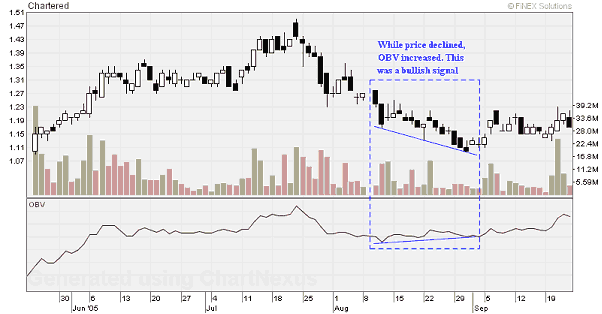On Balance Volume (OBV)
Overview
The importance of volume is often overlooked in the study of technical analysis. However for many analysts, volume is considered as important if not more important than the price movement. Joseph Granville is such an analyst who believes that volume is the cause and price is the effect. This belief led to the development of the On Balance Volume (OBV), which is an indicator that measures the flow of volume in and out of a security.
How it is calculated
OBV is calculated in two steps. First, each day's total volume is deemed as being positive or negative depending on whether prices closed higher or lower for the day. If prices closed higher, the total volume is positive; and vice versa. Second, each day's positive or negative volume is summed in a running cumulative total (Meyers 1994).
How to interpret
Buying and Selling Pressure
The actual value of OBV is not important. Its direction relative to price provides clues to buying and selling pressures. OBV is interpreted as follows:

Example

From the above chart of Chartered Semiconductor, notice that on August 2005, while price were declining, OBV were increasing. This signaled a bullish sentiment. It was observed from the chart that the price then went up and traded sideways.
Rules available in ChartNexus
OBV Divergence With Price
- OBV is increasing with price still moving down
- OBV is decreasing with price still moving up
Parameters available:
OBV Convergence With Price
- OBV is increasing with price moving up
- OBV is decreasing with price moving down
Parameters available:
OBV Trend
- OBV is trending upwards
- OBV is trending downwards
Parameters available:
References :
- Meyers, T. A., The Technical Analysis Course: A Winning Program for Investors and Traders, 1994
